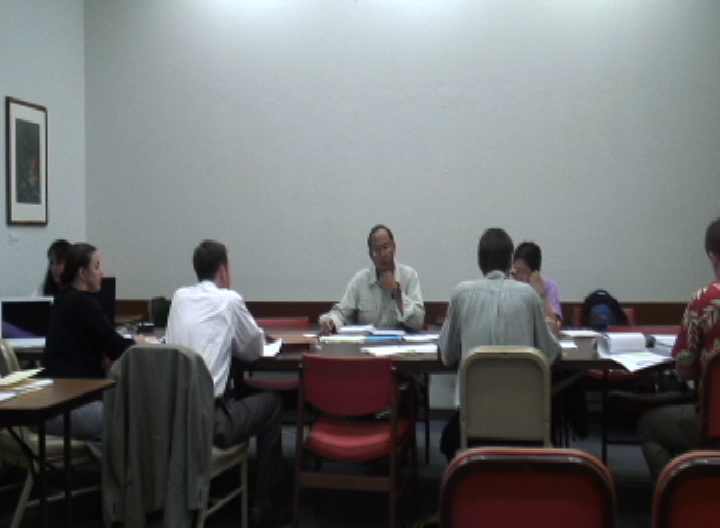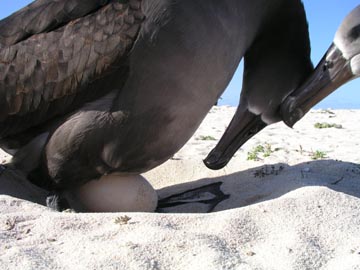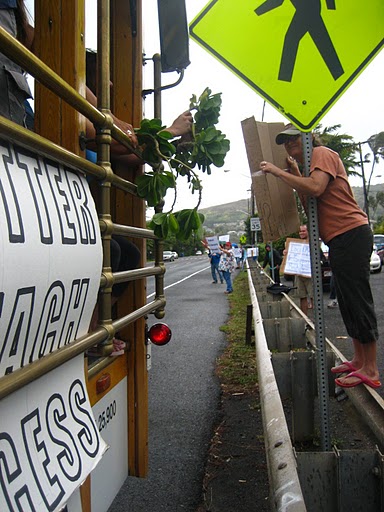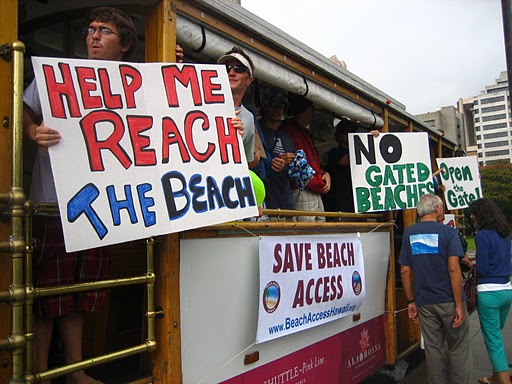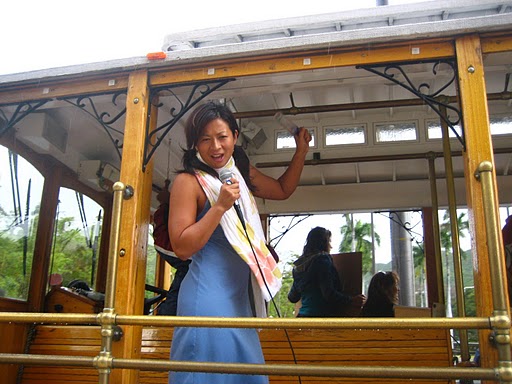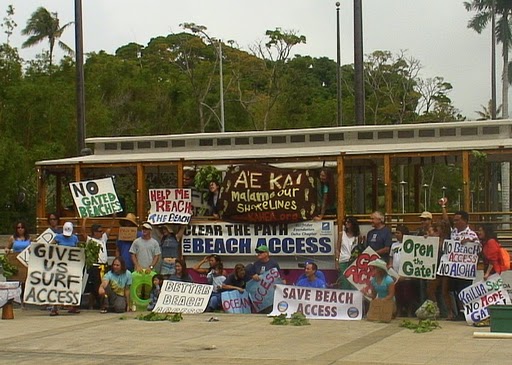Blog
News, updates, finds, stories, and tidbits from staff and community members at KAHEA. Got something to share? Email us at: kahea-alliance@hawaii.rr.com.
- Hawaii Kai Hui – www.hawaiikaihui.org
- Surfrider Oahu Chapter – www.surfider.org/oahu
- Beach Access Hawaii – www.beachaccesshawaii.org
- Common Ground Hawaii – www.commongroundhawaii.net
- Surfider Maui Chapter – www.surfrider.org/maui
- Kulana Huli Honua – www.kulana.hawaiiweb.org
- Defend Oahu Coalition – www.defendoahucoalition.org
- Keep the North Shore Country- keepthenorthshorecountry.org
- Surfrider Kauai Chapter – www.surfrider.org/kauai
Draft Science Plan Public Hearing: Grandfathering-in Permitted Activities
From: Andrea
Last night at the public hearing on the Draft Science Plan for Papahanaumokuakea Marine National Monument, held at the monument office in Hawaii Kai, a troubling consequence of the lack of environmental review was elucidated.
One of the Science Plan authors stated that research activities that have already been permitted are assumed to have gone through a “rigorous” review by management. The problem?
Actually, there could be quite a few from this muddy statement. For one, this statement suggests that research activities that have already been permitted will not be scrutinized- nor, certainly, environmentally assessed- in the future. It sounds like grandfathering-in existing and previous permits, meaning some activities that have been permitted in the past will be continuously assumed to pass muster, despite never actually being environmentally reviewed.
Clearly, grandfathering-in research activities so that they never undergo environmental review creates informational ravines that make cumulative impact analysis impossible. Cumulative impacts, the incremental impacts of an action when added to other past, present, and reasonably foreseeable future action, must be assessed. The managers need to understand the big picture, especially when making seemingly small decisions like permitting.
Secondly, what is this “rigorous” review that the manager mentioned? There has been no environmental assessment on any permits nor the entire permitting system nor the Science Plan, so it clearly was not environmental review. If this rigorous review were undertaken via the prioritization system of the Science Plan, that, too, is problematic.
As I have blogged before, the Science Plan has two tragic flaws: (1) the prioritization scheme that doesn’t actually prioritize permit activities (To prioritize permit activities, it asks, pros and…pros?, leading to 97% of potential research activities to be ranked as “critical” or “high” in importance.) and (2) the lack of environmental review.
But, the environmental assessment did not come with the Science Plan. The managers argue that this is the draft plan, so environmental assessment is not appropriate now. However, they also proclaim the plan to be an evolving document- not problematic necessarily. The evolving nature of the plan is problematic, however, for lack of environmental review because, if it is meant to evolve, when would the managers consider environmental review appropriate? There could always be an argument that it is not truly finalized yet if it’s an “evolving” document.
On the other side, if the monument managers, in fact, conduct an environmental assessment for the Final Science Plan, which is the next step after last night’s public hearing, the decision on permitting prioritization will have been made. And, environmental assessment is legally required to take place prior to decision-making. The whole point of environmental review is for decision-makers to be informed of environmental impacts before they make final decisions.
So, either the Science Plan truly is an evolving document, in which case an environmental review is likely to be put off forever. Or, the Science Plan will be finalized in the next step, the Final Science Plan, which frustrates the point of environmental review taking place before decisions are made.
Confusing? Yes. But it need not be.
KAHEA urges the monument managers to take the straightforward approach by conducting environmental review of the Science Plan, which guides the entire permitting process, prior to finalization of the plan. KAHEA also urges environmental review of all permits- no grandfathering-in. Each proposed permit should be looked at with a fresh eye, through the lens of cumulative impacts, which inherently change over time.
Let’s hope that public comments are indeed incorporated into the Final Science Plan, whenever that may be. Otherwise, the one-sided prioritization system will continue to rank most activities high, leading to excessive access and impact in a fragile, irreplaceable ecosystem.
What can you do? Speak up!
Last public hearing on the Science Plan is in Hilo tomorrow:
Hawai‘i, July 23th, 6-8 p.m.
Mokupapapa Discovery Center,
308 Kamehameha Ave, Suite 203, Hilo, HI, 96720.
All written public comments must be received by the monument managers by or before August 10.
• U.S. Mail:
Papahanaumokuakea Marine National Monument, Attn: Science Plan Comments, 6600 Kalaniana‘ole Hwy, Suite 300, Honolulu HI, 96825
• E-mail: nwhicomments@noaa.gov.
To read the plan:
http://papahanaumokuakea.gov/research/plans/draft_natressciplan.pdf
(It takes a few minutes to download, but once you’re there, skip to page 10 for the prioritization chart.)
Got Input for the Army on its Environmental Investigations? Apply by August 14!
From: Andrea
U.S. Army Garrison-Hawaii is soliciting community interest in creating a Restoration Advisory Board as part of the Military Munitions Response Program for two sites near the U.S. Army’s Pohakuloa Training Area. The motivation for the Restoration Advisory Board is to enable community participation in environmental issues on previously used military training sites.
Currently, the focus of the Restoration Advisory Board would be the remedial investigation of two response sites: the closed Humuula Sheep Station and the Kulani Boys’ Home.
The Board will be formed if enough community interest is expressed. The Board would be composed of community members, government representatives, and other stakeholders. The Board members would attend meetings and review and comment on plans and reports related to the investigation.
For more information or to request an application, contact:
Environmental Divison
MMRP Program Manager
Director of Public Works, USAG-HI
948 Santos Dumont Ave.
Building 105, 3rd Floor, WAAF
Schofield Barracks, HI 96857
Phone: 808-656-3109
Fax: 808-656-1039
*Applications must be postmarked or emailed by August 14!
6 Things to Malama Hawai'i in October
October is here, primaries are over, and things are heating up for the upcoming elections! It’s a great time to get involved! Here is the latest–six things you should know and do to protect some of the important places, plants, species and culture that make Hawai’i… Hawai’i! Mahalo for your continued support!
1. Help protect Hawaii Island from GMO-Taro and GMO-Coffee
Love local Hawaiian food and agriculture? Here’s your opportunity to support a historic new law that would ban GMO (genetically modified) taro and coffee on Hawai’i Island! Hundreds have already written letters in support! Mahalo!
Public Hearing in Hilo this Wednesday, Oct. 8th
If you are on Big Island, PLEASE TRY ATTEND!
Ben Franklin Building, 2nd Floor
County Council Office
Day long hearing starts at 10:30 am
This is the final Hawai’i County Council vote on Bill 361. At this critical moment this effort needs massive support more than ever- the local farmers and consumers need help standing up against strong-arming by huge multinational corporations. This bill will prohibit the cultivation, importation, and sale of GMO taro and coffee throughout Hawaii Island and fine any corporation or individual that violates this rule.
So Much Support So Far!
- Introduced by Council Member Angel Pilago, Bill 361 would ban the growing of genetically modified taro and coffee on the Big Island.
- This bill has received overwhelming public and political support, and has already successfully passed through two Council votes to make it to this FINAL VOTE.
- If the bill passes this last vote it will go on for final approval by Mayor Harry Kim of Hawaii County.
Click here to learn more! http://kahea.wordpress.com/2008/10/08/let-hawaii-island-be-known/
2. Help Protect Makua Valley from Expanded Live-Fire Training by the U.S. Army
Over 100 people attended the hearing last night at Nanakuli High School, as again, the Army seeks to expand live fire exercises in Makua Valley on the Waianae Coast of Oahu.
Pre-contact, the valley–called “parent” in Hawaiian–was among of the most productive agricultural lands on the island. Makua is home to Kamuakuopio Heiau, the Makua Koa (fishing shrine), and many other sacred and cultural sites. Live fire exercises also threaten the existence of 41 endangered species of plants and animals which live in and around the valley.
Marti attended the hearing last night and posted this report on KAHEA’s blog.
http://kahea.wordpress.com/2008/10/08/injustice-at-makua/
You can attend one of the public meetings being held at the locations listed below. Each meeting will consist of an open house from 5:30 p.m. – 6:45 p.m., where information will be provided (on the SDEIS), followed by a public comment session from 7 p.m. – 9:30 p.m.
October 7, 2008
Wahiawa District Park Recreation Center
1129 Kilani Ave
Wahiawa, HI 96786
October 8, 2008
Aunty Sally Kaleohano’s Luau Hale
799 Piilani Street
Hilo, HI 96720
October 9, 2008
Waimea Community Center
65-1260 Kawaihae Road
To submit written comments, you can:
email: usaghipaomakuaeis@hawaii.army.mil
mail: USAG-HI Public Affairs Office
742 Santos Dumont
WAAF, Schofield Barracks, HI 96857
fax: 808-656-3162
Attn: Makua SDEIS Public Comments
From our hoa aloha and ‘ohana at DMZ-Hawai’i/Aloha ‘Aina:
“This is an urgent call for all practitioners of aloha ‘aina, to all who love Hawai’i nei to rally to protect Makua. The Army plans to fire over two million munitions annually – further destroying the beautiful and sacred Makua valley during their proposed 242 days a year of war games. These munitions include the most threatening illumination munitions, 120mm HE mortars, 155mm HE howitzers, inert TOW missiles and 2.75 caliber rockets, some of which will be launched from helicopters, and all of which the Army admits will increase chances of wildfire and “physical damage and loss of mana for the Native Hawaiian culture” (SEIS 4-199).
- The devastating impacts of wildfire caused by Army war games are unacceptable.
- Any further desecration of our sacred sites is unacceptable.
- Limiting access to the valley is not acceptable.
For three decades, the Hawaiian movement for aloha ‘aina has worked to protect Makua valley from the US military. We have been successful, and in the process, have won important religious and cultural access rights, and have temporarily stopped training in the valley. The military wants to reverse these advances, though, by returning the violence of live-fire training to Makua.”
To learn more, you can go to www.dmzhawaii.org or call 808-988-6266.
3. Largest Marine Conservation Area in History Proposed for the Pacific
Through eight years of overwhelming public support, you have helped make the Northwestern Hawaiian Islands (NWHI) the largest marine reserve on earth! Today, President Bush has directed his administration to consider similar protections for a number of large, ecologically important ocean areas in the Central and Western Pacific. The complete list of areas considered for protection involves seven important reef ecosystems located in the Central Pacific, three islands in the Commonwealth of the Northern Marianas Islands, and the world’s smallest atoll in Samoa.
Of these, most utmost importance to protecting Papahanaumokuakea in the NWHI is Johnston Atoll. This small deep ocean island shares a very important relationship with the newly protected NWHI. Unfortunately, decades of military use has contaminated the land and surrounding ocean. Serious protections are needed for Johnston Atoll, including a commitment to clean up.
Protecting these areas to the maximum extent (200 nautical miles) would create the largest conservation area in history, and provide conservation and protection for some of the Pacific’s rich natural and cultural heritage. Under this proposal, these native Pacific ecosystems would have a chance at undisturbed survival, free from the threats that are decimating ocean life elsewhere. These islands are among the most intact natural coral reef ecosystems left in the Pacific.
BUT! There is real concern the Bush Administration, under pressure from industry, could allow “multiple use practices” like mineral extraction and overfishing in these areas, harming their native species and ecosystems. Exclusion of “commercial use” and “multiple use management” is precisely why natural and cultural resources in the Northwestern Hawaiian Islands today have a real chance. We today have an opportunity to create a similar legacy throughout the Pacific.
Oahu guys: You can show your support by attending the Honolulu hearing:
Honolulu, Hawaii
Thursday, October 16
6:30pm – 8:30pm
McCoy Pavilion – Ala Moana Park
1201 Ala Moana Boulevard
Everybody: Can support by writing to the Chairman of the Council on Environmental Quality
by mail:
722 Jackson Place, N.W.
Washington D.C. 20503
or
email: chairman@ceq.eop.gov
Learn more:
NY Times Editorial (http://www.nytimes.com/2008/09/03/opinion/03wed2.html?ref=opinion)
Marine Conservation Biology Institute www.mcbi.org
4. Hawaiian Monk Seal May Get More Critical Habitat!
Good news! On Friday, in response to a petition from KAHEA, the Center for Biological Diversity, and the Ocean Conservancy, the National Oceanic and Atmospheric Administration (NOAA) announced it will consider designating additional critical habitat for the highly endangered Hawaiian monk seal in the Northwestern as well as Main Hawaiian Islands. This is an important first step! Hawaiian Monk seals are today one of the most endangered marine mammals in the world.
What will more critical habitat for monk seals do? More critical habitat will require the federal government to limit federal activities that could harm the beaches and nearshore waters used by monk seals. It will prevent the federal government from permitting a private development or constructing a federal highway that might harm protected critical habitat. It would also give the State access to federal funds to support state efforts to encourage monk seal recovery.
What does it NOT do? This would not in any way limit public access to beaches or give the federal government any new control over our beaches or add any new restrictions on fishing.
The Hawaiian monk seal is on the brink of extinction. It is projected that in a few years there will be less than 1,000 Hawaiian monk seals left in the wild. Without serious action, recovery will soon be impossible. We know that protecting our beaches and nearshore waters are critical to the survival of this endemic Hawaiian species, and we’re working to make it happen. Public participation will be needed to support this effort in the coming months, so please be on the look-out for monk seal action alerts! Still want to learn more? More information available at www.KAHEA.org.
5. Sifting through the Shibai: Some Truths About Development on Mauna Kea
The astronomy industry and their friends at the University of Hawaii (UH) and are at it again–proposing not just another telescope but a gigantic 30-meter telescope (TMT) with a dome the size of a modern football stadium.
Moving Forward and Undermining Protections
Proponents of the TMT propose to level the last pristine plateau to build the mammoth structure. They announced last week that despite long-standing community opposition, they will go ahead with an environmental impact statement (EIS), signaling that they intent to move forward with development. The EIS is required by state law for any kind of construction in State Conservation Districts (like the one protecting the entire summit of Mauna Kea).
At the same time, UH is trying to undermine the legal protections against excessive telescope construction on Mauna Kea by hiring a private firm, Ku’iwalu, to push through UH’s management plan and EIS.
So, why is UH so eager to write a plan for the future of Mauna Kea? Answer: The TMT.
Here’s what they’re NOT telling you:
- UH doesn’t have authority to write a management plan for the summit. The BLNR is the ONLY entity statutorily and constitutionally mandated to oversee the protection, conservation and preservation of Mauna Kea. Not the UH, OMKM, UC-Caltech or anyone else. Recently, the Third Circuit Court ordered the state Board of Land and Natural Resources (BLNR) to prepare and approve a comprehensive management plan for the conservation district on Mauna Kea–not UH.
- There has been no authorized plan for Mauna Kea since 1985, and the terms of that plan have been repeatedly violated by UH. The last BLNR management plan for the summit conservation district was completed by DLNR staff in 1985. The 1985 Plan set limits on the size and number of telescopes allowed in the Mauna Kea Conservation District. That Number was 13 (11 major and 2 minor telescopes). UH has repeatedly violated that limit by building the Very Large Base Line Array (VLBA), Smithsonian Millimeter Array (the SMA has 24 telescopes pads and support structures that spans an area over half a mile across) and the Gemini North Telescope.
UH and Kuiwalu are continuing to claim they can do a “new” management plan for Mauna Kea instead of BLNR, despite the Court’s order. But this isn’t new.
UH has attempted to pass off numerous plans as the “new” comprehensive management plan, but the Third Circuit Court struck down all of them, including UH’s 2000 Master Plan. This means UH’s 2000 Master Plan, and everything set up through it, has no effect or force of law–including the Office of Mauna Kea Management (OMKM). The OMKM has no authority to oversee the management of Mauna Kea.
The Law is Clear
There is no law that gives UH or the telescope industry the right to develop and destroy the unique natural and cultural resources of Mauna Kea, but there are many state and federal laws that require Mauna Kea be protected for its religious, cultural, and ecological importance.
No new telescope development proposals until a true, proper, and public management plan is in place! The TMT and UH are just gonna have to wait until the community can genuinely come together and work out the priority needs of the summit in order to truly protect the rare ecosystem and unparalleled spiritual and cultural significance of Mauna Kea.
read more: “First Light Far Off, If Ever” in the Hawai’i Independent
http://www.hawaiiindependent.net/featured/2008/09/29/first-light-far-off-if-ever/
6. Historic Water Win in East Maui – MAHALO PIHA to all who participated!
A big MAHALO! is due to the hundreds of people who responded to the call from taro farmers! They submitted testimony in droves and packed the room at the Water Commission hearing last Wednesday in Haiku-to demand that East Maui Irrigation Company (EMI) stop diverting every last drop of water from the streams of East Maui.
The Commission took two days’ worth of public testimony and ultimately agreed with the taro farmers, scientists, and general public that EMI is diverting too much water from the East Maui watershed. The Water Commission ruled that EMI must return at least 12 million gallons of water a day to 8 of the 27 streams at issue, in order for the native stream life to survive.
This is a historic decision was made possible only by the consistent and growing public pressure to uphold the constitutional rights of taro farmers and the legal obligations of the state to protect native ecosystems against the profit-seeking interests of corporations. Mahalo piha to everyone who took the time to participate. This decision will serve as a model for water restoration efforts throughout the islands.
But there is still much more to do to restore the full vitality of East Maui’s taro patches and diverted streams all throughout our islands, so please watch for more calls to kokua from Hawaii’s taro farmers.
In the meantime, you can to read the mahalo from the East Maui taro farmers. http://kahea.wordpress.com/2008/10/01/water-win-hundreds-responded-to-taro-farmers-call-for-help/
Mahalo to all who give! These e-newsletters, as well as all the work we do at KAHEA, is possible only through the support of individuals like you! We are committed to raising our money grassroots-style. And in the spirit of keeping it real, we do not solicit or accept any corporate or Federal money. This makes your support all the more important!
You can support KAHEA’s work by making a contribution online or by mail to PO Box 37368, Honolulu, Hawai'i 96837. MAHALO PIHA!
being heard? yup, it feels good.
From Marti:
I admit to still being on cloud 9 about the recent announcement of the hearing officer’s decision on KAHEA’s standing to participate in the contested case on the research permit violations in the NWHI. Hooray! What an amazing affirmation of the power of showing up.
We have attended every possible hearing about research permits to the NWHI and raised serious concerns about the lack of enforcement action on these research permit violations. We have shown up to talk about the lack of standards to determine who should be allowed up there and the lack of best practices to ensure their activities do no harm, as the law requires. We have again and again said that these research permit violations are a serious breach of public trust, and that rules should apply equally, no matter who is in violation–everyone should be held to the same standard: fishers, researchers, sight-seers, everyone.
I wish had a dime for every time I’ve heard someone say with regards to these research violations, “Trust me, researchers would never harm the resource.” Talk about totally missing the point. The point is that researchers, like everyone else, are obligated to know and follow the rules put in place to protect this fragile public trust resource. Simple as that. The fact is most people don’t ever to intend to harm the environment, but they do because they don’t follow the rules, don’t think that their actions could have an impact.
It was incredibly empowering to sit at that hearing table – elbow to elbow with HIMB’s attorney and the Attorney General on behalf of DLNR – and have an impartial officer of the court listen to all three sides. We had an equal opportunity to present arguments and evidence. And in the end, this impartial officer said, “Yes, KAHEA brings a meaningful perspective to this discussion and should be party to this case.”
Wow. For that, my faith in the public decision-making process is renewed. We couldn’t have asked for a more meaningful affirmation of our voice and role.
Too often the voices of those most directly affected by the decisions of officials are marginalized or even lost altogether. It is easy for money and politics to drive decisions. But when those influences are stripped away and those who have nothing to give but love for our ‘aina – people like Uncle Buzzy – can sit at a table and be heard on equal terms with all rest… that is when the best decisions are made.
It was these people – those without power or money – that led the struggle for the strongest possible protections in the Northwestern Hawaiian Islands and successfully made their voice heard. And it will be these same people who will continue to ensure that those protections are fully implemented and enforced…. because these protections are nothing if they aren’t enforced, fully.
Hooray, hooray today–for the little guy!
Highlights of KAHEA’s concerns about lack of DLNR enforcement (from our recent webpage update):
The violations were first reported to DLNR staff in May 2006 while the vessel was still in the NWHI. But DLNR staff failed to notify the proper enforcement division, DOCARE, until late February 2007, almost a year after the infractions occurred. No investigators met the ship when it docked in Honolulu to inspect what the researchers brought back with them.
“This is a major problem,” said Marti Townsend, Program Director for KAHEA. “The history of close working relationships between DLNR and HIMB staff has clearly called into question DLNR’s ability to be objective and properly enforce the law.”
Before the incidents were investigated by DOCARE and voted on by the Land Board, staff with the Aquatics Division of DLNR attempted to negotiate a penalty with the researchers at HIMB. The staff brought the enforcement action before the BLNR twice – first in January 2007 and again in July 2007. Both times the staff recommended that the Land Board impose weakened penalties against the HIMB researcher, side-stepping the Refuge’s strict “one strike” law that prohibits future permits to be granted to past permit violators.
“Given all of the tremendous public support for the strongest possible protections, and political will for the creation of these protections, it is astonishing that personal friendships and financial ties still seem to determine the near absolute lack of enforcement of NWHI rules,” said Townsend.
More Media Coverage of Beach Access Rally Day!
Links to media coverage from Scott at Surfrider Oahu Chapter:
http://www.honoluluadvertiser.com/
http://starbulletin.com/2008/02/03/editorial/editorial01.html
http://starbulletin.com/2008/02/03/news/wild.html
http://kgmb9.com/main/content/view/3783/40/
http://www.khnl.com/global/story.asp?s=7814785
Polihale public access agreement reached on Kauai:
http://www.kauaiworld.com/articles/2008/02/03/news/news01.txt
Network News Coverage of Beach Access Rallies
On KGMB:
“Hawaii’s beaches are public property. But in recent years, more private landowners have closed off paths that lead to the shoreline. In an effort to change that, some 20 grassrooots organizations rallied across the state today.”
http://kgmb9.com/main/content/view/3783/40/
On KHNL:
“Protestors throughout the state hit the streets to call attention to beach access. They say more and more new developments are closing off paths to public beaches, and they want them back.”
http://www.khnl.com/global/story.asp?s=7814785
mahalo pumehana.
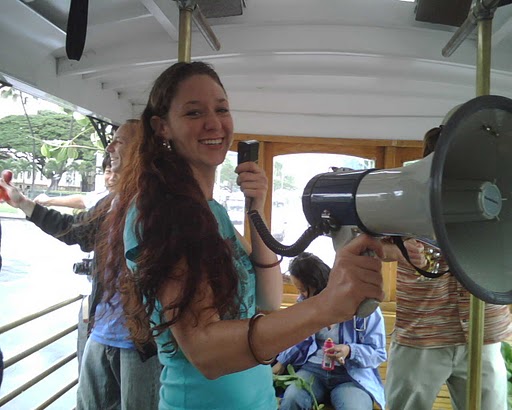
So, the day is done.
What an inspiring 24 hours! The view from the trolley was amazing, as we went from rally to rally on Oahu’s south shore and met and saw dedicated individuals–many out in the rain–waving signs, calling to cars and passers-by.
MAHAHLO PIHA!
Hawaii’s Beach Access Day (Groundhog Day!) happened because individuals and organizations islands-wide stepped up and stepped out to make a statement about the problems they face, and their hopes for a better Hawaii–one with open, free and public beach access. We tried to keep up with the list of supporting groups flying around in various emails, but at this point… we have officially lost count! We believe there were well over 20 groups and over 300 individuals out waving signs today. Awesome!
This was an incredibly, er, organic event day–something that happened because so many people put their talents and energy into this effort in different parts of the islands. Many of them have been working on access issues for years.
Closing thought: We’d like to share these words sent from Rich, at Beach Access Hawaii:
…Then I stopped and listened to “Rock Me on the Water” by Jackson Browne…
Oh people, look around you
The signs are everywhere
You’ve left it for somebody other than you
To be the one to care…That was me. But getting involved with this cause has shown me there are people who care. One guy — Ricky Bermudez — who doesn’t even get these emails because he doesn’t own a computer, has single-handedly collected almost 300 petition signatures, and has been posting G-Day flyers in shop windows and handing them out. Two people have contributed $100 each, and others have made generous donations as well.
Their heartfelt notes though, meant more to me than the money. I wish you could read them, because you’d understand how much this means to some people.
Stay inspired, stay active, stay engaged, and stay informed! On the momentum of this islands-wide rally day, things… are beginning to happen. What happens next is in the hands of all of us. When ordinary people unite voices, when communities get organized and get together, there is no limit to what can be accomplished!
A few places to start (resources and groups working on access issues):

